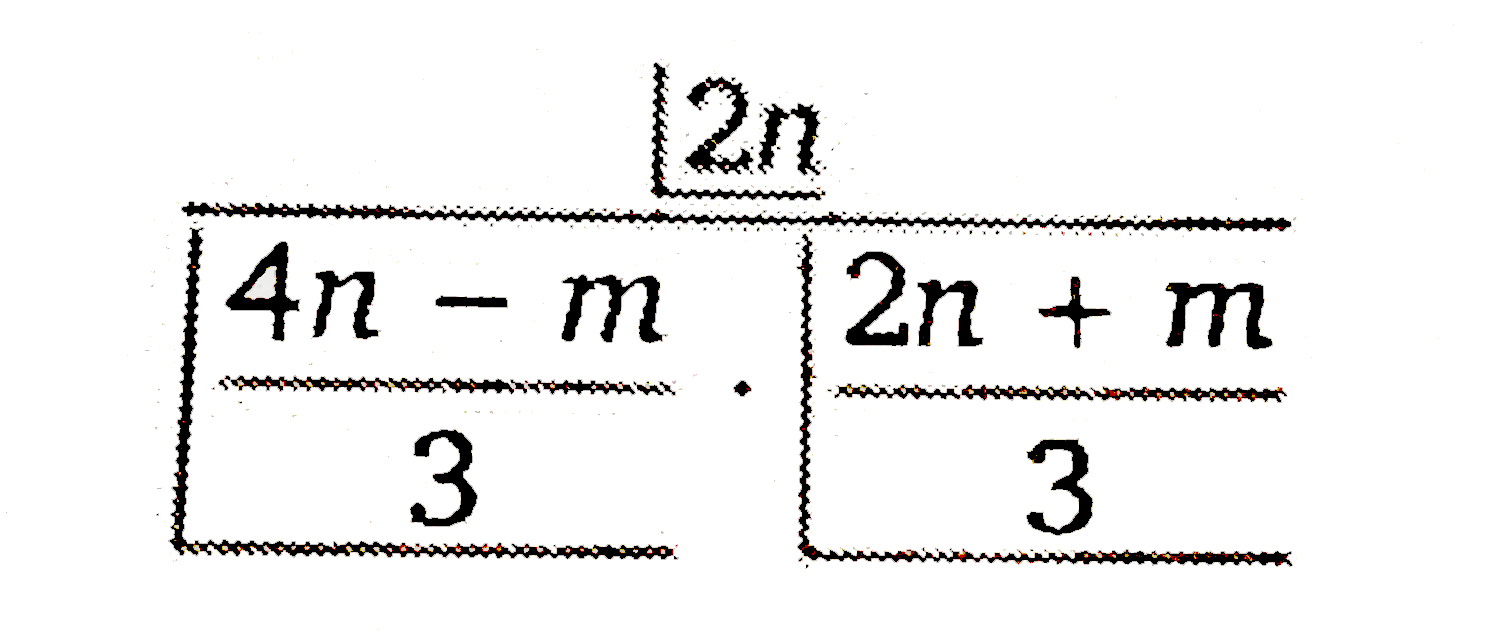If x,y are positive real numbers and m, n are positive integers, then prove that xnym(1+x2n)(1+y2m)≤14
To prove that
xnym(1+x2n)(1+y2m)≤14
for positive real numbers x,y and positive integers m,n, we will use the AM-GM (Arithmetic Mean-Geometric Mean) inequality.
Step 1: Apply AM-GM Inequality
Using the AM-GM inequality on 1 and x2n:
1+x2n2≥√1⋅x2n=xn
This implies:
1+x2n≥2xn(1)
Step 2: Apply AM-GM Inequality Again
Now, apply the AM-GM inequality on 1 and y2m:
1+y2m2≥√1⋅y2m=ym
This implies:
1+y2m≥2ym(2)
Step 3: Multiply the Inequalities
Now, we multiply the inequalities (1) and (2):
(1+x2n)(1+y2m)≥(2xn)(2ym)=4xnym
Step 4: Rearranging the Inequality
From the above inequality, we can rearrange it as follows:
xnym(1+x2n)(1+y2m)≤14
Conclusion
Thus, we have shown that:
xnym(1+x2n)(1+y2m)≤14
This completes the proof.
---
Topper's Solved these Questions
- INEQUALITIES INVOLVING MEANS BOOK - CENGAGE ENGLISHCHAPTER - INEQUALITIES INVOLVING MEANS EXERCISE - Concept Application Eexercises 6.2
6 Videos
- INEQUALITIES INVOLVING MEANS BOOK - CENGAGE ENGLISHCHAPTER - INEQUALITIES INVOLVING MEANS EXERCISE - Concept Application Eexercises 6.3
6 Videos
- INEQUALITIES INVOLVING MEANS BOOK - CENGAGE ENGLISHCHAPTER - INEQUALITIES INVOLVING MEANS EXERCISE - Example 8
1 Video
- INEQUALITIES AND MODULUSBOOK - CENGAGE ENGLISHCHAPTER - INEQUALITIES AND MODULUSEXERCISE - Single correct Answer
21 Videos
- INTEGRALSBOOK - CENGAGE ENGLISHCHAPTER - INTEGRALSEXERCISE - All Questions
764 Videos
Similar Questions
If xandy are positive real numbers and m,n are any positive integers, then prove that xnym(1+x2n)(1+y2m)<14
View SolutionLet x, y be positive real numbers and m, n be positive integers, The maximum value of the expression
xmyn(1+x2m)(1+y2n) is
View SolutionIf m and n are positive quantites , prove that (mn+1m+1)m+1≥nm
View SolutionIf n is a positive integer, prove that |Im(zn)|≤n|Im(z)||z|n−1.
View SolutionIf m and n are positive integers, then prove that the coefficients of xm and xn are equal in the expansion of (1+x)m+n
View SolutionIf andn are positive integers, then limx→0(cosx)1m−(cosx)1nx2 equal to :
View SolutionIf
xcosA+ysinA=mandxsinA−ycosA=n,
then prove that :
x2+y2=m2+n2
View SolutionIf x,y is positive real numbers then maximum value of xmyn(1+x2m)(1+y2n) is (A) 14 (B) 12 (C) m+n6mn (D) 1
View SolutionIf x,y is positive real numbers then maximum value of xmym(1+x2m)(1+y2n) is (A) 14 (B) 12 (C) m+n6mn (D) 1
View SolutionIf 'n' is a positive integer then prove that the coefficient foxm in the expansion of (x2+1x)2n is :

View Solution